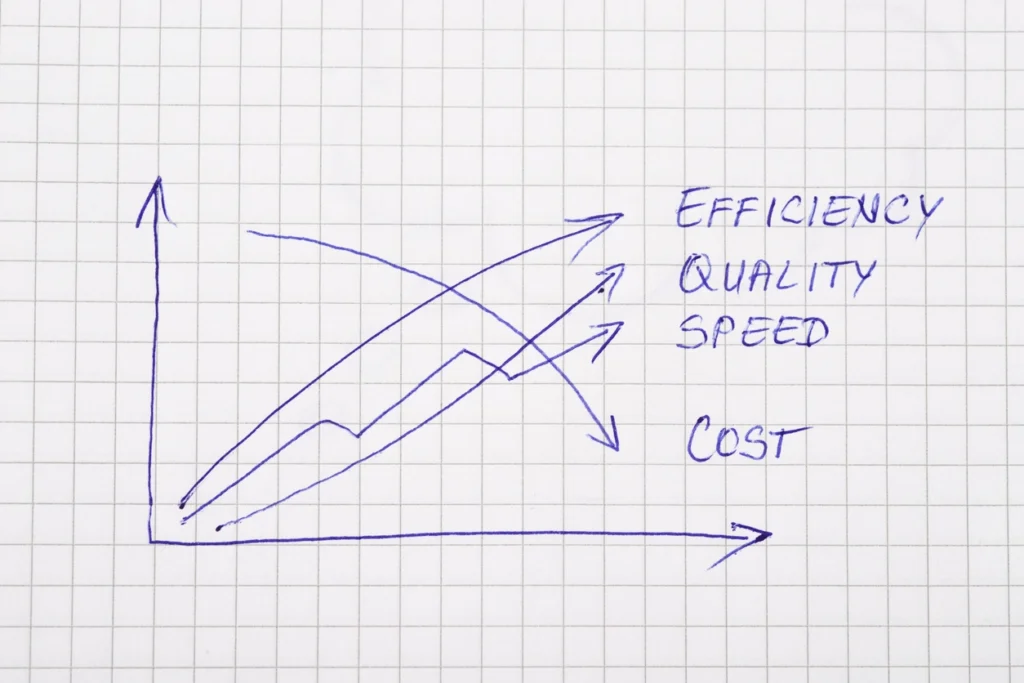Customer communication is all about the way your business interacts with its customers – answering questions, solving problems, and building relationships. It’s not just what you say, but how you say it.
Think of each interaction as a tiny building block of your customer’s experience. Good communication makes them feel valued and understood, leading to loyalty. Bad communication? It’s the quickest way to lose customers and damage your reputation.

Effective customer communication isn’t a “nice to have,” it directly impacts your bottom line:
- Customer Retention: Happy customers stick around longer.
- Increased Sales: Trust makes it easier to recommend additional products or upgrades.
- Reputation Boost: Positive interactions lead to word-of-mouth recommendations.
- Valuable Feedback: Conversations help you identify pain points and improve your business.
Principles of Effective Customer Communication
Great customer communication isn’t rocket science, but it does take thoughtfulness. Keep these core principles in mind:
Clarity is King
Customers shouldn’t have to decipher what you mean. Use simple language, avoid industry jargon, and get to the point quickly. Think of it like explaining something to a friend – clear and helpful.
Empathy Matters
Put yourself in your customers’ shoes. Are they frustrated with a broken product? Excited about a new purchase? Tailor your tone and response to their emotional state, showing that you understand where they’re coming from.
Personalize (Within Reason)
Addressing a customer by name and referencing their past purchases can be powerful. However, don’t overdo it – being too familiar or using data in a way that feels intrusive can backfire.
Time is of the Essence
Long wait times for a chat response or an email taking days to answer are huge turn-offs. Speed matters, but so does setting realistic expectations. If it’ll take longer to solve a problem, acknowledge the issue right away and provide a timeframe for resolution.
Consistency is Key
Whether a customer calls, emails, or tweets, your brand voice and the level of service should feel the same. This builds trust – they know what to expect, no matter how they contact you.
These principles apply whether you’re a small business or a massive corporation. Customers just want to feel heard, understood, and valued.

Channels of Customer Communication
Customers expect to reach you in ways that suit them. Let’s explore the major channels, along with tips for maximizing their effectiveness:
Phone
Phone remains the trusted standby for complex issues or urgent needs. Ensure staff are trained in active listening and problem-solving, and use clear menu systems to direct calls efficiently, minimizing hold times.
Email is the workhorse for detailed inquiries, order updates, and non-urgent matters. Craft clear and concise subject lines for easy scanning, personalize when possible (name, order details), but avoid overly salesy language. Also, set realistic expectations for response times.
Social Media
Social media is a public forum for quick responses, questions, and addressing negative feedback. Respond promptly, even to negative comments (taking the conversation offline if necessary). Use social media monitoring tools to track brand mentions and sentiment, and maintain a consistent brand voice aligned with your overall image.
Website (FAQs, Help Center)
Your website’s FAQ or Help Center section is a vital self-service option for deflecting common questions with clear and accessible answers. Make your help section easy to find from any page on your website, write answers in plain language, avoiding jargon or technical complexity, and regularly update content to reflect product changes or common issues.
Live Chat/Chatbots
Live chat and chatbots provide real-time support for simple queries or directing customers to helpful resources. If using chatbots, ensure a seamless transition to a human agent when needed. Set expectations upfront about wait times and capabilities, and collect chat transcripts for insights into common customer pain points.

Handling Difficult Conversations
Even with the best intentions, sometimes customer interactions get heated. The key is to remain calm and professional, aiming to turn frustration into resolution.
- Acknowledgement and Empathy Start by actively listening to the customer’s complaint. Let them vent a little, and validate their feelings (“I understand how frustrating that must be.”). This simple act can go a long way in defusing anger.
- Solutions-Oriented Focus Once the initial emotion is out, shift the focus to problem-solving. Ask clarifying questions to get to the root of the issue. Clearly outline the options available to the customer, and be transparent about what you can and cannot do.
- Setting Boundaries Unfortunately, some customers may become unreasonable or even abusive. It’s important to protect yourself and your team. Calmly state that abusive language will not be tolerated. If the situation escalates, know when to disengage and involve a supervisor.
Have clear company policies on unacceptable behavior and escalation procedures. This empowers staff to handle difficult situations without feeling unsupported.
Technology Tools for Customer Communication
The right technology isn’t just about efficiency – it elevates the entire customer experience. Here are some key tools and how they help:
Types of Tools
- CRM (Customer Relationship Management
- Help Desk Software
- Communication Analytics
- Knowledge Base Software
Practical Applications
- Personalized Service
- Faster Resolution
- Proactive Problem-Solving
- Efficient Self-Service
Emerging Trends
- AI-Powered Chatbots
- Omnichannel Platforms
- Voice Analytics
Measuring and Improving Customer Communication
Don’t just assume your communication is great – measure it! Data holds the key to identifying what’s working and where to focus improvement efforts.
- Key Metrics
- CSAT (Customer Satisfaction): Surveys after interactions to gauge satisfaction with the specific service.
- NPS (Net Promoter Score): The broader “would you recommend us?” question.
- First Response Time: How quickly you initially acknowledge an inquiry (across channels).
- Resolution Rate: Percentage of issues resolved on first contact.
- Channel Usage: Which channels customers prefer helps optimize support.
- Data Analysis for Insights
- Low CSAT on Phone? Review call recordings to pinpoint if it’s wait times, staff attitude, etc.
- Spike in Social Complaints? Might indicate a product issue, not just poor social media response.
- High Resolution Rate, but Low NPS? Problem might get fixed, but the process was so painful the customer is still unhappy overall.
Iterative Process
- Customer communication is never “done.” Use insights to:
- Train Staff: Address skill gaps based on real feedback.
- Refine Processes: Is your returns process too complicated? Data will tell you.
- Invest in Technology: If slow response times are the issue, the right tools help.
Regularly survey customers and your own staff. Their insights are invaluable in conjunction with hard data.
Customer Communication: The Key to Continuous Improvement
Investing in customer communication isn’t a one-and-done project – it’s an ongoing journey of refinement. By embracing the principles outlined, strategically utilizing channels, and consistently measuring your efforts, you unlock a powerful advantage. Excellent communication fosters a loyal customer base, strengthens your reputation, and fuels long-term business success.
Frequently Asked Questions About Customer Communication
How do I make sure my tone is appropriate across different channels?
While your brand voice should be consistent, slight adjustments for each channel are key. Email can be slightly more formal than social media, where a conversational tone is expected. Train staff on this distinction, provide examples, but always emphasize empathy. Even in a formal setting, you’re never being cold, just professional.
Should small businesses offer 24/7 support?
Not necessarily! It’s more important to set realistic expectations than wear yourself thin. If 24/7 is impossible, clearly state your hours on your website. A well-crafted chatbot or FAQ section can handle many off-hour inquiries. The key is to respond promptly once your team IS available, even if it’s to acknowledge receipt and provide a resolution timeframe.
What if a customer asks something I don’t know the answer to?
Honesty is the best policy! Avoid making things up on the spot. Instead, say something like, “That’s a great question, let me find out for you.” Take their info to follow up promptly, and then do the legwork internally. This shows you value their inquiry even if you don’t have the immediate solution.
How do I balance personalization with avoiding creepiness?
Focus on using personalization to demonstrate you were listening, not to show off how much data you have. A simple “Thanks for being a loyal customer since [date]” is better than referencing every past purchase. Also, give customers control – let them opt-in to emails with tailored product recommendations, rather than it being the default.
Is it okay to use humor in customer communication?
It depends! If humor aligns with your brand personality, it can be great to defuse tension. However, proceed cautiously. Sarcasm rarely translates well in text. Keep humor light and positive, and if in doubt, err on the side of being helpful rather than trying too hard to be funny.











